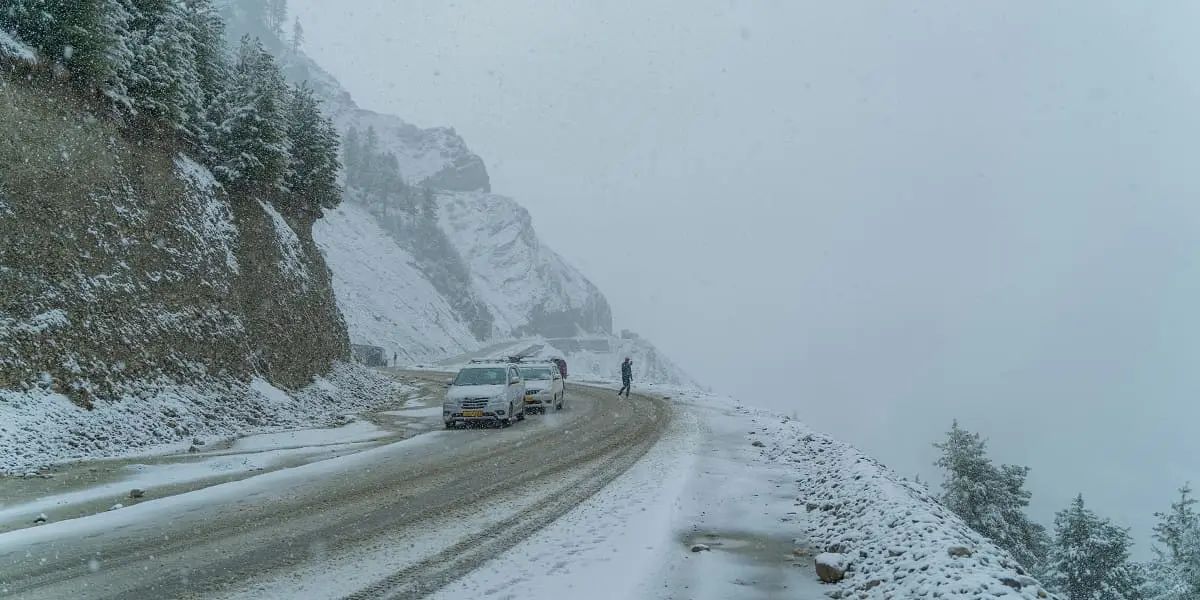Content
Are you heading for the mountains and wondering how many snow chains you should fit to your vehicle? Between snow and ice, roads can become risky paths, requiring the right equipment to use them safely.
Snow chains, for example, are indispensable for improving tire grip on these slippery surfaces. But how many do you really need to ensure your safety on the road: two or four? How do you determine which model is right for your vehicle, and how do you install them efficiently?
This article aims to clarify these points and give you some tips on how to handle snow chains with ease. Discover that, despite appearances, the use of chains is not all that complex, and that they can make a major contribution to your safety in winter.

When to install snow chains?
Snow chains are required in areas marked with a blue sign showing a wheel surrounded by a chain. This sign stipulates that you must equip at least two of your vehicle’s drive wheels with snow chains, on pain of a fine of 135 euros.
It is also advisable to use snow chains when the road is snowy or icy, even if there are no signs, to avoid losing control of the vehicle or getting stuck.
The main purpose of snow chains is to increase the grip of snow tires on snowy or icy surfaces, by creating points of adhesion between the tire and the road.
They reduce braking distances, improve vehicle handling and stability, and make starting and climbing easier.
The use of snow chains is therefore essential to ensure your safety and that of other road users.
How many snow chains are required?
Fitting your vehicle’s drive wheels with two snow chains is an affordable, fast and effective way of improving grip on snow and ice, while complying with current legislation.
However, this option can compromise stability, braking and roadholding. Equipping only two wheels can lead to imbalance, increasing the risk of loss of control or accident.
Fitting snow chains to all four wheels is the ideal solution for maximizing safety, performance and comfort.
This practice ensures excellent traction, reduces the risk of skidding and loss of control, and significantly improves handling, braking and steering.
However, this method requires a higher budget (purchase of two pairs of chains), takes longer to mount and dismount, and increases vehicle weight, which can have an impact on fuel consumption and performance.
Professionals and manufacturers tend to prefer the installation of four snow chains for optimum safety and handling. However, they admit that two chains may be sufficient in some cases, provided certain precautions are taken.
It is essential to choose chains compatible with the type of vehicle and tires, and not to exceed a speed of 50 km/h with snow chains.
Avoid driving on non-snow-covered roads to avoid damaging the vehicle or the asphalt, and check chain tension regularly and readjust if necessary.

Practical tips for optimum use
Choosing the right type of snow chains and installing them correctly are essential for safe driving. Here are some useful tips for choosing the right chains and installing them on your vehicle without difficulty.
How to choose the right type of chain?
Snow chains vary in model, shape, fastening system and price. It’s essential to choose chains that are compatible with the characteristics of your vehicle and tires, to guarantee their effectiveness and avoid damaging your vehicle.
- Tire dimensions: Identify the width, height and diameter of your tires, indicated on their sidewall, to choose the right chain size;
- Vehicle type: Determine whether your vehicle is front- or rear-wheel drive, and install the chains on the appropriate drive wheels. Also take into account electronic systems such as ABS or ESP, which may influence chain use;
- Chain type: depending on your needs (frequency, duration, difficulty of trip), you can choose between metal, textile or spider chains, each with its own characteristics.
Key steps to successful snow chain installation
Follow these steps to effectively install your snow chains:
- Find a safe place, park and take out your mounting equipment;
- Prepare the chains, lay them out and untangle them next to the wheels to be mounted;
- Position the chains behind the wheel and run them over the wheel without touching the bodywork or mechanical components;
- Attach the chains in accordance with the manufacturer’s instructions to ensure they fit the tire correctly;
- Adjust the tension, using tensioners for manual chains or letting automatic chains adjust as you ride;
- Check assembly to ensure chains are correctly installed and adjusted before setting off;
- Drive carefully, avoid exceeding 50 km/h, and check the condition of your chains regularly;
- After use, dismantle the chains according to procedure, clean them and store them properly.
Tips for driving with snow chains
Driving with snow chains requires you to adapt your driving style:
- Do not exceed 50 km/h and adapt your speed to road conditions;
- Anticipate your actions: brake, accelerate and change direction smoothly;
- Regularly check the condition and positioning of your chains to ensure their efficiency and your safety;
- Adapt your driving to road conditions, and remove your chains if the road is clear.
Snow chains are essential for safe driving on snow-covered or icy roads. They increase tire grip on slippery surfaces, reducing the risk of skidding or losing control of the vehicle. Finally, it’s essential to drive slowly and carefully, according to road conditions.
- Discover also
- How to recognize a snow tire at a glance!
